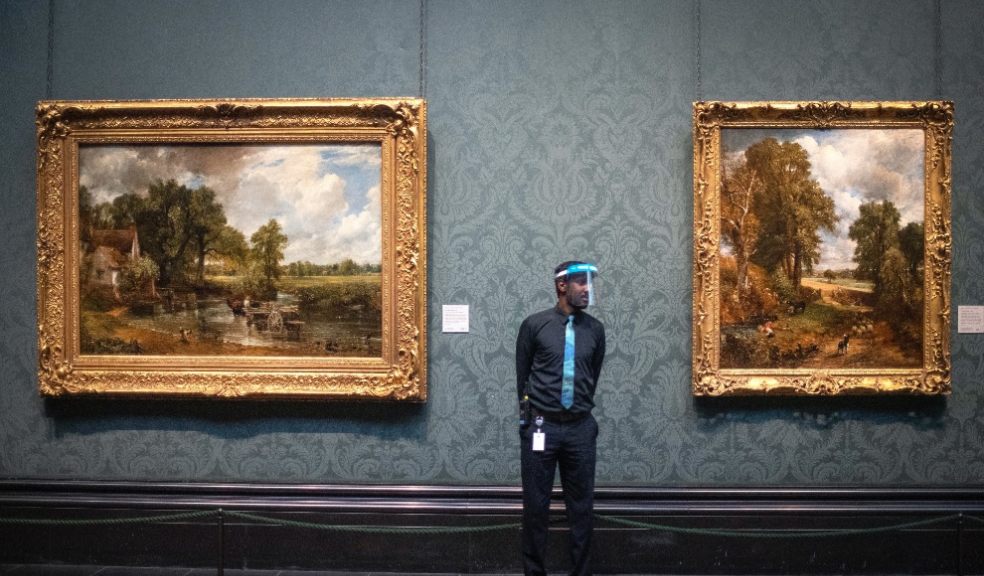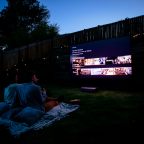
How the world’s most famous art galleries are adapting to the pandemic
It’s been a stormy summer so far for the world’s museums and galleries.
Since lockdowns began in February and March, many cultural institutions have been haemorrhaging money, and many have still not reopened. London’s Tate Modern, for example, is slated to restart on July 27, while the Museum of Modern Art in New York will stay shuttered until late August at the earliest.
Here’s how the world’s galleries are adjusting to the pandemic, from the frescoes of the Vatican to the Mona Lisa smile…
The Louvre, Paris
The world’s most visited gallery, the Louvre reopened on July 6 to much fanfare and a deliberate dearth of visitors.
Just 7,000 people attended on opening day – all of whom had reserved tickets in advance online, wore mandatory face masks, and navigated the museum via a one way system marked on the floor. Around 30% of the floor space remains closed, but the remaining 70 stocks around 30,000 works of art, and, crucially, the Mona Lisa.
Guests had to endure a socially distanced queue to sample her inscrutable smile, but enjoyed a once in a lifetime opportunity to see the world’s most valuable painting in relative peace and quiet.
The Vatican Museums, Vatican City
Home to the world famous Sistine Chapel – or to be more precise, its world famous ceiling – the Vatican Museums re-opened at the beginning of June by allowing small, pre-booked groups of tourists to enter at 15 minute intervals, under the watchful gaze of papal staff.
Visitor numbers have been zealously guarded (it’s hard to ensure social distancing when everyone’s looking upwards), and all arrivals have their temperatures taken on entry. Access is denied without refund to latecomers, non-mask-wearers, and anyone tipping the thermometer at more than 37.5 degrees.
Though the usual thronging tour groups are still some way off, the Vatican Museums virtual tour emerged as a breakout star of lockdown – serving up 360 degree views of the Sistine Chapel and beyond.
The Uffizi Gallery, Florence
The spiritual home of the Italian Renaissance (whatever Venice says), the Uffizi Gallery reopened in June with the clear promise that no more than 450 visitors should be within its walls at any given time.
Popular paintings have been adorned with ‘distance markers’ – dots on the floor where people can stand and stare without breaking social distancing – while masks and temperature checks are compulsory for all. A few piazzas over, authorities at the Florentine Duomo have gone a step further, fitting visitors with necklaces that vibrate when they’re too close together.
Like its colleagues in Rome, the Uffizi has spent the pandemic becoming an unlikely internet hit. First came the virtual tour – a fitting format for a gallery packing quality over quantity – then a set of viral TikTok videos mixing its masterpieces with modern music and dance.
Rijksmuseum, Amsterdam
An early re-opener by international standards, the Rijksmuseum nudged its doors ajar on June 1 after just two and a half months on the sidelines, and has been a pioneer of the one-way system.
Floor arrows guide visitors through the gallery’s halls, along three possible routes. The two “highlights” tours centre on the Dutch Masters – Rembrandt, Brueghel, Vermeer – while the “exhibitions” option takes in the temporary display by Caravaggio and Bernini. The arrows are non-negotiable, the museum website is quick to note, even for those with Museum Cards.
Photography is barred, so too are tour groups, disinfectant hand gel is doled out at regular intervals, and visitors must stay at least 1.5 metres apart. Tickets currently retail at a one euro discount, and time slots must be booked in advance.
The National Gallery, London
Opening on July 8, the National Gallery became the first of London’s major museums to welcome back visitors, and has done so under predictably strict regulation.
Audio guides have been scrapped, hand gel dispensers await round every corner, and, as is now standard, tickets must be booked in advance, online. Unlike many of its international colleagues, the gallery has not made mask-wearing mandatory, though it is advised. The resident Titian exhibition has been extended, and visitors must stay two metres apart.
Image: Victoria Jones/PA













